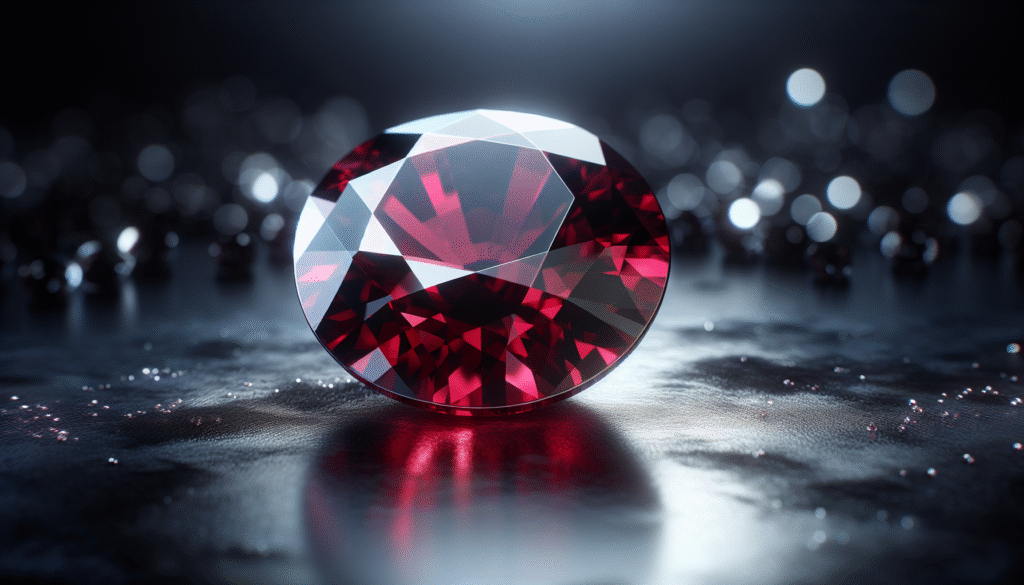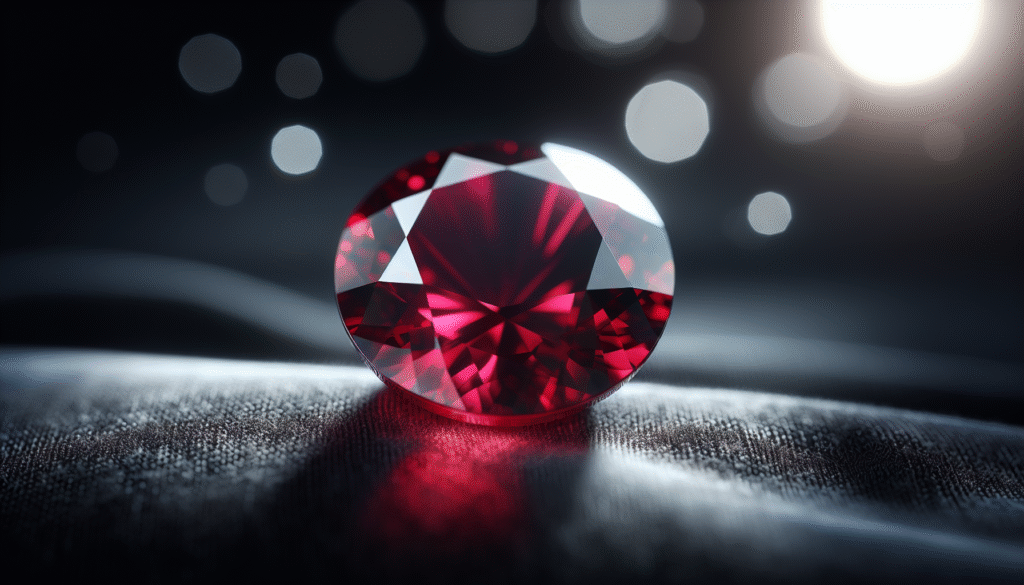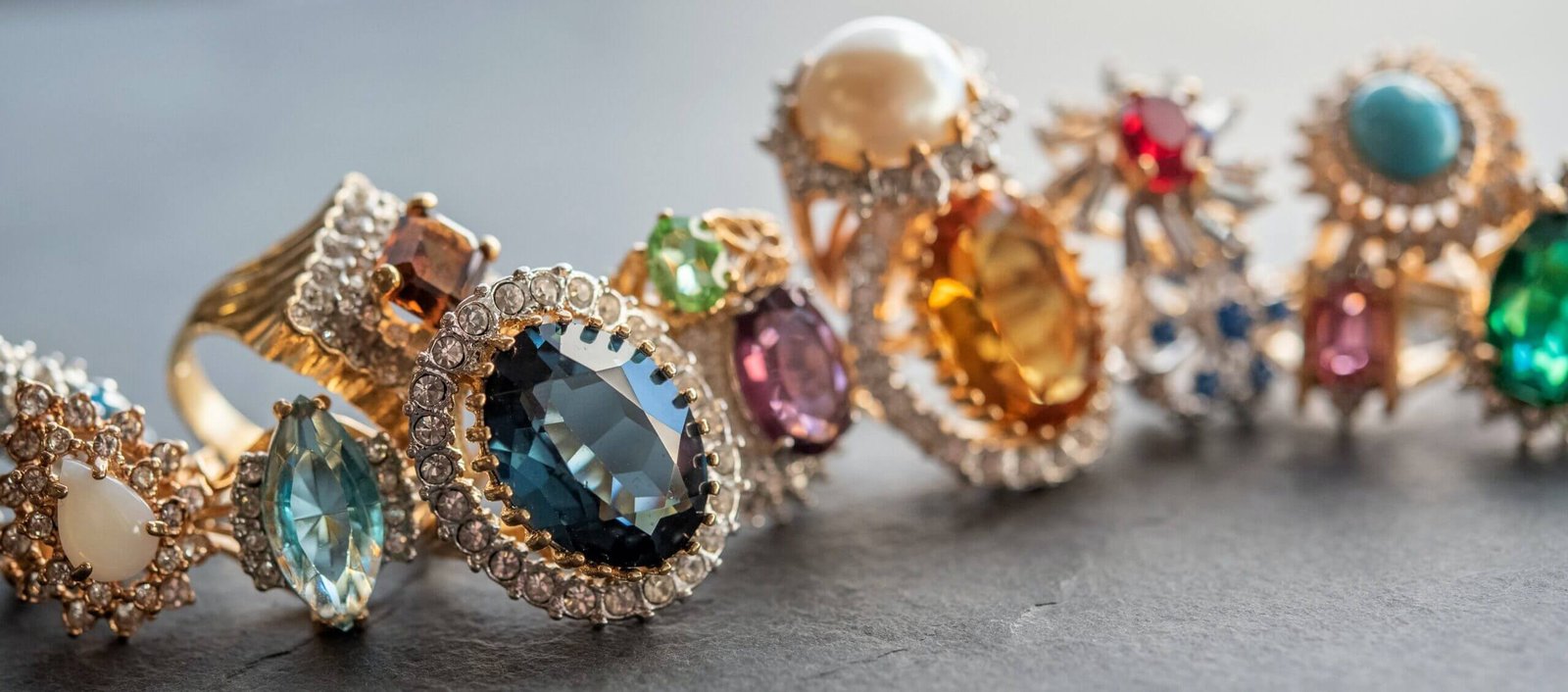Have you ever stood in front of a jewelry case, squinting at a red stone and wondered whether its price tag was sincere or a practical joke?
Is Ruby Very Expensive?
You might think of rubies as the dramatic member of the gemstone family: loud, red, and prone to attracting attention in a way that makes you feel like you accidentally put on a stage costume. The short answer is: sometimes. The long answer is a sprawling tale involving color, history, provenance, treatments, and the occasional dealer who smiles like someone who knows the secret of immortality. This article will walk you through why rubies can be expensive, when they’re reasonably priced, and how to decide if the one you’re eyeing is worth the price.
What is a ruby?
A ruby is a red variety of the mineral corundum, the same mineral species as sapphire. The red color comes from chromium impurities in the crystal structure, and that single factor—how much chromium and how it interacts with light—makes all the difference in the world. You should picture it as a simple chemical quirk that turns a hard, durable mineral into something that, for centuries, humans have paid large sums to possess.
The historical and cultural weight
Rubies have been coveted for thousands of years. People in ancient civilizations believed they offered protection and power, and rulers often used rubies in coronation regalia. That storied past adds a psychological premium: you’re not just buying a red stone, you’re buying a piece of cultural mythology. If you’ve ever felt inexplicably noble holding a ruby, that’s partly the gemstone and partly the centuries of pageantry behind it.
What makes a ruby expensive?
If you want a quick checklist to carry in your head while window-shopping, start here. Several interrelated factors determine the price: color, clarity, cut, carat weight, origin, and treatment. Each of these can swing the price from reasonable to eyebrow-raising.
Color
Color is king. You should understand that tone, saturation, and hue combine to produce what dealers describe as “pigeon’s blood”—a vivid, pure red with a hint of blue. That term is dramatic because the color is rare and highly sought after. The best-color rubies command the highest prices because color is visually immediate: you don’t need a microscope to fall in love.
- Tone: how light or dark the ruby is.
- Saturation: how intense the color is.
- Hue: the basic color family—pure red versus red with pink or orange.
When you see a ruby whose color seems to glow from within, you should expect a price increase. If the color leans toward brownish or orange, the price drops accordingly.
Clarity
Clarity refers to inclusions—internal features like tiny mineral crystals, needles, or fissures. Unlike diamonds, some inclusions in rubies are acceptable, even expected. You should know that many fine rubies have silk-like rutile inclusions which can soften the stone’s appearance in a pleasing way. However, large fractures or heavy cloudiness can significantly reduce value and durability.
Think of clarity as the ruby’s personality quirks: a few tiny imperfections make it interesting; glaring flaws make it fragile and less valuable.
Cut
A well-cut ruby maximizes color and brilliance. You should expect that the cut will influence how the color shows. Rubies are often cut to preserve weight more than to create sparkle, so you’ll see many cabochons and deep cuts. A proportionate cut can elevate a modest stone into something visually stunning, which affects price.
Carat weight
Carat weight matters far more for rubies than you might assume. Because large rubies are rare, the price per carat increases exponentially as size grows. You should be prepared to pay a premium for a ruby that crosses size thresholds (for example, from 1.5 carats to 2 carats). The rarity curve is steep: doubling the size can more than double the price per carat.
Origin
Where a ruby comes from strongly affects its value. Burmese (Myanmar) rubies historically carry a premium due to their color and provenance. Other sources like Mozambique, Madagascar, Thailand, and Kenya produce excellent rubies too, but each origin has its own market perception. You should know that an origin certificate can add substantial value.
Treatment
Most rubies are heat-treated to improve color and clarity. You should not panic at the word “treated”—heat treatment is commonplace and accepted. What changes the price significantly is more aggressive treatments like glass-filling (lead-glass) which enhance appearance but reduce durability. Untreated rubies with fine color and clarity are rare and expensive.
How much do rubies cost?
You want numbers. You want ranges. You don’t want to be hazy while someone smiles and says, “It’s a very special piece.” Prices vary wildly depending on the factors above. Below is a simplified table to give you a ballpark idea of price per carat for natural rubies as of recent market conditions. These are illustrative ranges to help you orient yourself.
| Quality / Origin | Typical Price per Carat (USD) |
|---|---|
| Commercial quality (heated, small, common origins) | $50 – $500 |
| Good quality (heated, decent color/clarity) | $500 – $2,000 |
| Fine quality (heated, strong color, good clarity) | $2,000 – $10,000 |
| Exceptional (untreated or top Mongolian/Burmese color) | $10,000 – $100,000+ |
| “Pigeon’s blood” Burmese, top quality, large carat | $50,000 – $1,000,000+ per carat |
Remember: price per carat isn’t linear. A 0.9-carat exceptional ruby will still cost less than a 1.5-carat exceptional ruby per carat, because larger specimens are rarer.
Example price scenarios
If you go into a showroom and see a lovely 3-carat ruby with vivid red color from Mozambique and a GIA report indicating heat treatment only, you should expect a price in the lower to mid-five-figure range. If that same 3-carat stone were untreated and certified Burmese with superb color, it could be several hundred thousand dollars.
Origins: why they matter and which ones to know
Origin matters because geology affects color, market narrative, and rarity. Dealers often highlight origin because it helps describe desirability, and sometimes because it justifies the price.
Myanmar (Burma)
Burmese rubies are legendary for their “pigeon’s blood” color. You should realize that political and ethical concerns (sanctions, human rights) have complicated the trade, which can affect availability and pricing. A certified Burmese ruby with excellent color will typically be one of the most expensive.
Mozambique
Mozambique has emerged in recent decades as a major source of high-quality rubies. The stones can rival Burmese rubies in color and clarity, and the market has become accustomed to paying substantial sums for top Mozambique gems.
Thailand & Cambodia
Often heat-treated in-country. You should look closely at stones from this region for aggressive treatment. They can be excellent but typically don’t command the same premium as Burmese examples.
Madagascar, Kenya, Tanzania
These regions produce fine rubies with their own character. You should appreciate these as often offering good value for quality relative to more famous origins.

Treatment types and how they affect price
Treatments are common in the ruby world. Some are routine and acceptable; others drastically reduce value and durability.
Heat treatment
This is the most common and widely accepted treatment. You should understand that heat improves color and reduces inclusions. Heated rubies are common, stable, and generally considered “natural” for the market. Prices reflect whether a stone is heated but still fine—heated stones can still be expensive.
Fracture filling / glass filling
Glass filling fills surface-reaching fractures with lead glass or other fillers to dramatically improve clarity and appearance. You should be cautious: such treatments can make the stone vulnerable to heat and blunt impacts, and many buyers consider them inferior. Glass-filled rubies are significantly cheaper than comparable non-filled stones.
Diffusion treatment
A surface or near-surface treatment that introduces color-causing elements into the stone. You should be skeptical if diffusion is present, since it is less stable and often viewed unfavorably.
Disclosure matters
Dealers are supposed to disclose treatments. You should insist on written documentation stating any treatment, because it directly affects price, care, and resale value.
| Treatment | Effect on Price | Durability Concerns |
|---|---|---|
| Heat treatment | Moderate impact; widely accepted | Stable |
| Glass (lead) filling | Large reduction in price | Sensitive to heat, chemicals |
| Diffusion | Significant reduction | Can be unstable; surface-only color |
| No treatment (untreated) | Premium price | Stable; higher value |
Certification: your protective paperwork
You should always seek certification if you’re paying thousands of dollars. Certifications from reputable labs like GIA, AGL, or SSEF provide independent verification of origin and treatment. A lab report won’t make a poor stone great, but it will protect you from misrepresentation and help with insurance and resale.
What to look for in a report
- Identification: natural vs. synthetic.
- Treatments: heat, filling, diffusion.
- Origin: if determinable (some labs provide “origin estimates” with varying certainty).
- Measurements and quality descriptors.
If a seller balks at providing a report or offers only a vague certificate from an unknown lab, you should walk away or insist on independent testing.
Synthetic and lab-grown rubies: cheaper but contentious
Lab-grown rubies are chemically and physically identical to natural ones, and they can be beautiful and much less expensive. You should approach them like this: lab-created rubies are gems with different provenance and generally lower resale value, but they offer a fine-looking stone for a fraction of the price.
Differences that affect price
- Natural rarity vs. manufactured abundance.
- Resale: natural stones usually retain value better.
- Emotional value: some buyers prefer natural for tradition or perception.
If you want the look without the cost, lab-grown rubies are practical. If you want an investment or a historically “authentic” piece, natural rubies win.
| Type | Typical Price | Resale Expectation | Handling |
|---|---|---|---|
| Natural untreated ruby | High | Strong (if top quality) | Standard care |
| Natural heat-treated | Moderate to high | Moderate | Standard care |
| Glass-filled | Low | Poor | Avoid heat & harsh chemicals |
| Lab-grown | Low to moderate | Low | Standard care |
| Simulants (red spinel, garnet) | Low | Minimal | Standard care |
Alternatives to expensive rubies
You should know your alternatives if a genuine high-quality ruby is outside your budget. There are several red gemstones and simulants that can offer similar visual appeal.
Red spinel
Often mistaken for ruby historically, red spinel can be brilliant and vivid, sometimes at a fraction of the price. Some famous “rubies” in royal collections were actually spinels.
Garnet (pyrope, almandine)
Garnets are common, have a warm red color, and are affordable. You should realize they typically lack the same depth and brilliance as rubies.
Red tourmaline (rubellite)
A beautiful alternative with its own character. Often less expensive, though top-quality specimens can approach gemstone prices.
Synthetic rubies and glass simulants
These are valid options for fashion jewelry or budget-conscious buyers. You should always expect reduced resale value but considerable savings.

Buying tips: how to get the best ruby for your money
You should adopt a strategy that balances what you want visually with what you can afford, while protecting yourself against misrepresentation.
Prioritize color over size
A smaller ruby with exceptional color will often appear more impressive than a larger, duller one. You should prioritize hue and saturation since these have the biggest visual impact.
Ask about treatment and origin
Always ask; insist on disclosure. You should get written confirmation of any treatments and a lab report if the stone is expensive.
Consider the setting
A good setting can make a modest ruby look stunning. You should think about metal color, accent stones, and the design’s ability to protect the ruby from knocks.
Check return policy and warranties
You should only buy from sellers with transparent return policies, especially for expensive purchases.
Bargain smartly
Sellers expect negotiation. You should be calm, informed, and willing to walk away. A bit of patience often leads to better deals.
Caring for your ruby
Rubies are durable (second only to diamonds in hardness among common gems), but they still need care. You should avoid sudden temperature changes, remove jewelry during rough work, and clean regularly.
Cleaning methods
- Warm, soapy water with a soft brush is safe for most rubies.
- Ultrasonic cleaners are generally okay for untreated or heat-treated rubies but risky for filled stones.
- Avoid steam cleaning for glass-filled stones.
Insurance and appraisal
For high-value rubies, you should get a professional appraisal and consider insurance. This protects you against loss, theft, and damage.
Investment perspective: is a ruby a good store of value?
You should not view most rubies as a quick financial play. Exceptional rubies—rare colors, provenance, and untreated stones—have performed well historically, sometimes rivaling diamonds. For most rubies, however, liquidity is lower than for more standardized assets. If you want to invest, you should focus on:
- Exceptional provenance (Burmese, historical pieces).
- Untreated stones with superb color and clarity.
- Proper documentation and provenance.
Like any collectible, timing, taste, and condition matter. You should also be prepared to hold long-term.
Common myths and misconceptions
There are several myths circulating when it comes to rubies. You should be ready to separate fact from fiction.
Myth: All rubies are redder than all other gems
False. Many gemstones can be vivid red; what makes rubies special is their combination of color and durability.
Myth: Only Burmese rubies are valuable
Not true. While Burmese rubies command high prices, fine rubies from Mozambique or Madagascar can be equally valuable.
Myth: Heat treatment ruins value
No. Heat treatment is standard. It lowers value compared to an equivalent untreated stone, but heated stones can still be very expensive.
Myth: Larger rubies are always better
Size is important, but color and clarity are often more critical. A larger, brownish ruby will rarely be preferred to a smaller, vivid red stone.
How to assess value at a glance
You won’t be a gemologist after a single visit to a jeweler, but you can develop an eye. You should:
- Look for pure, vivid red hues with strong saturation.
- Check for bright, stable color across the entire stone.
- Inspect for large fractures or dark clouds.
- Ask for documentation and verify treatment.
- Compare multiple stones and prices.
If something feels too good to be true—too perfect at too low a price—chances are you’re looking at a treated or synthetic stone.
Ethical considerations and conflict stones
You should be aware of the ethical landscape. Mining can involve poor labor conditions, environmental damage, and complex supply chains. Certifications and transparent sourcing practices are increasingly important. You should ask questions about provenance, fair labor practices, and whether the seller participates in traceability programs.
Practical buying scenarios
Here are a few scenarios to help you decide what makes sense for you.
Scenario 1: You want an engagement ring budget-conscious
If you’re buying an engagement ring and want that ruby look without breaking the bank, consider a smaller natural heated ruby set in a flattering halo of diamonds or lab-grown ruby of higher carat. You should prioritize color over size and ensure the setting protects the stone.
Scenario 2: You want a showpiece and can spend freely
If you have a flexible budget and desire a statement stone, insist on an independent report, consider Burmese or fine Mozambique stones, and think about long-term preservation and insurance. You should also understand the market and possibly consult a gemologist.
Scenario 3: You want ethical and affordable
If ethics and budget matter, consider lab-grown rubies with transparent supply chains for any accompanying materials. You should also ask sellers about recycled metals or responsibly sourced diamonds.
Final thoughts
You should understand that rubies are not uniformly expensive; they’re graded on multiple factors that create a wide price spectrum. What makes a ruby pricey is a mixture of stunning color, rarity, provenance, and lack of treatment. But if you want the look without the astronomical price, there are many reasonable alternatives—from heated rubies and stones from less rare origins to lab-grown variants and visually similar gems.
Buying a ruby is part practical decision, part emotional purchase. You should let your eyes lead, but bring documents and skepticism. If you walk out with a stone that makes you feel slightly more theatrical—like you should be reciting lines in a period drama—then you’ve likely made a personally valuable choice, regardless of the resale market. If you bought it because someone told you that “pigeon’s blood” was on sale and you weren’t sure what it meant, you should probably go back with a certificate and your wallet closed until you’ve done your homework.
If you have a specific stone you’re considering, you can tell me its details—carat, origin, reported treatment, and price—and I’ll help you figure out whether it’s reasonably priced.



